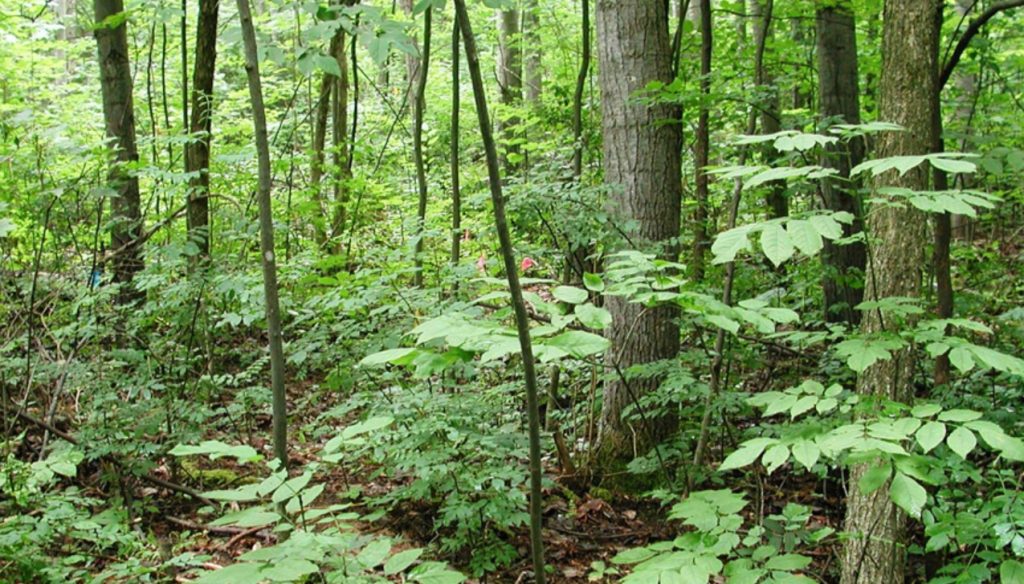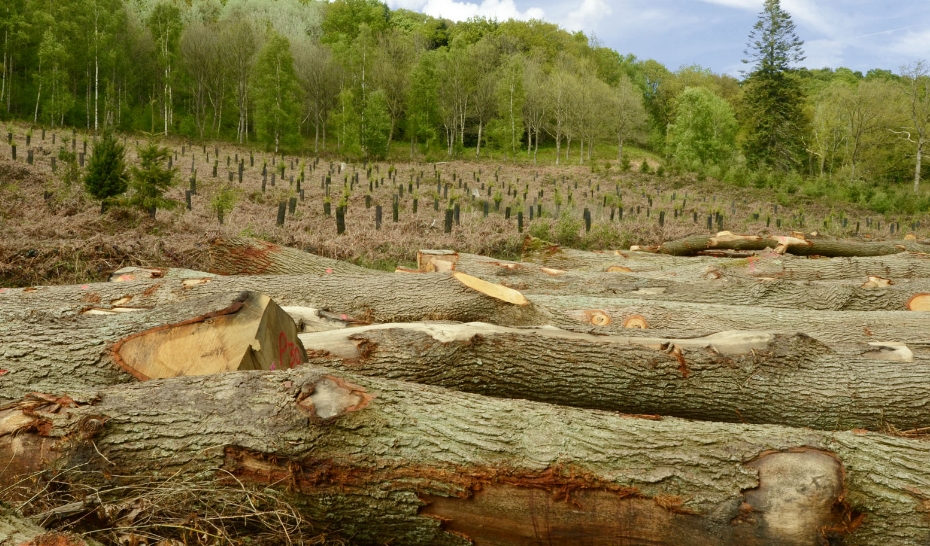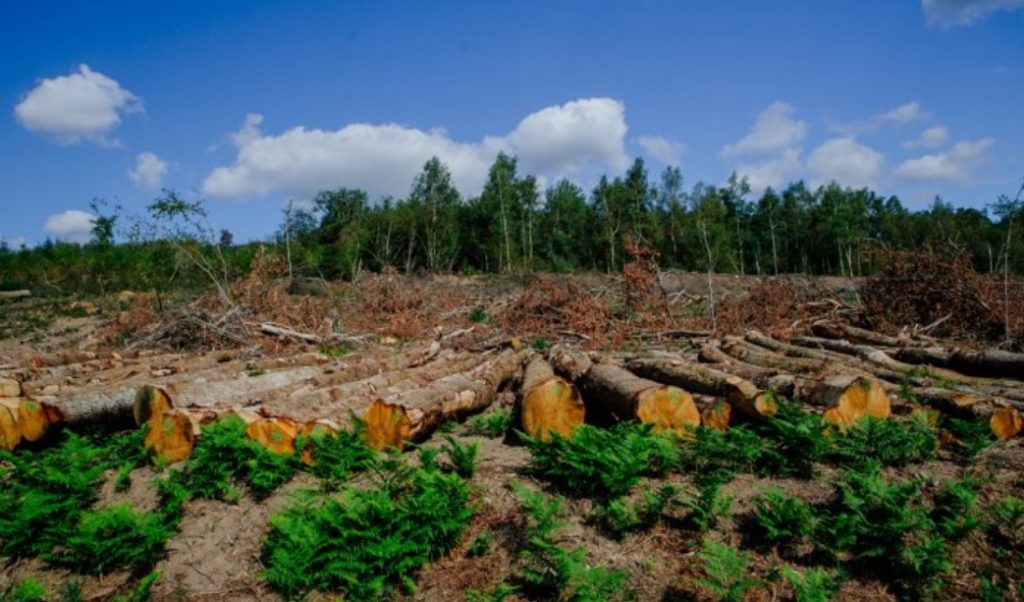
Fires, droughts, pests… monoculture exposes forests to much higher risks than a mixed forest. Explanation.
Forests represent a large volume of carbon captured and then stored in the trunks of trees, their roots, and in the soil. As such, they play a crucial role in regulating the climate on a planetary scale. They also form an exceptional reservoir of biodiversity and provide protection against soil erosion. Not to mention that they are a source of wood for construction, heating or papermaking. And these are just a few examples of the many services provided by these ecosystems.
In short, the people of Earth need them badly. And yet, the fires ravage the forests of the American West or Australia. In Europe, it is the drought that causes massive dieback, and the heat of this summer of 2022 will hardly help matters. Hundreds of hectares of Amazon rainforest are also being cut down to make way for farmland. Around the world, emerging diseases and invasive alien pests are threatening the survival of many tree species.
Faced with this paradox, many initiatives have emerged to plant trees, with the idea that trees would be the solution to climate change. The idea is attractive, but can be simplistic, especially because not all plantations are created equal.
Planted forests and forest monocultures

According to the Food and Agriculture Organization of the United Nations, there are now 294 million hectares of planted forests worldwide. This is 7% of the total forest area. They are constantly increasing (+171 million hectares since 1990). Half of them are plantation forests dedicated to industrial timber production.
These plantations are mostly monospecific, monocultures. They are generally established from a limited number of species (eucalyptus, pines, spruce, poplar, rubber, teak), often exotic; they are intensively managed.
The question is not whether monoculture is good or bad. Nor even whether planted forests are forests or not. They too can be of interest, but these large monospecific massifs present risks.
Faced with the challenges represented by climate change, the introduction of invasive species and the transformation of the habits of consumer citizens, it is therefore necessary to assess them.
Mixed Forests and Pest Attacks

The best documented risk associated with monoculture is a health risk related to the spread of pests and pathogens. We have just published a meta-analysis of the scientific literature demonstrating that, in more than 600 case studies, herbivorous insects cause on average 20% more damage in monocultures than on the same species of trees growing in mixed forests.
Of course, this is an average and counter-examples exist, but our analysis makes it possible to identify the mechanisms by which mixed forests would be more resistant to attacks by herbivorous insects.
Already, it must be realized that most herbivorous insects are more or less specialists, in the sense that they are only able to feed and reproduce (therefore cause significant damage) on a limited number of species. more or less related trees. We are talking about host trees. A host tree is recognized as a food resource by herbivorous insects which have the adaptations to circumvent the defenses of this tree. On the contrary, a non-host tree is not recognized as a resource, or its defenses are such that they do not allow the herbivore to exploit it.
This being said, the first mechanism by which the diversity of trees reduces the damage caused by herbivorous insects is purely statistical: host trees are all the less numerous (more “diluted”) in a forest than the number of tree species. trees, especially non-hosts, increases. They are actually less likely to be found by their herbivores. The same dilution mechanism also acts on pathogens.
Second, because insects are able to recognize hosts and avoid non-hosts, the diversity of trees acts as a signal jammer: the repellent signals emitted by non-host trees prevent insects from spotting and orient towards their host trees.
It is this mechanism which would be at the origin of the protective role of the hedges of deciduous trees against the attacks of the pines by the processionary caterpillar in the forest (monospecific) of the Landes de Gascogne.
Tree diversity and natural disturbances

The health risk associated with monoculture can bere extended to damage of “abiotic” origin (i.e. not related to living organisms) caused by wind, fire or drought. Research results are more recent and indeed more equivocal than in the case of pests; but several elements suggest that mixed forests would be more resistant and more resilient (they would recover more quickly after a disturbance) than monocultures.
Thus, forest fires spread more easily in forests dominated by conifers than in mixed forests associating conifers with deciduous species, which are less flammable.
Same observation with regard to the wind: mixed forests seem on average more resistant to storms when they combine conifers and deciduous trees. The situation is more controversial in the case of drought: some species benefit from the mixture, others do not.
Mix better, not mix more

It is not reasonable in the current state of scientific knowledge to present mixed plantations as the panacea for all forest health problems. Even if the review of the scientific literature largely pleads in favor of mixtures to promote the resistance of forests to biotic and abiotic risks, counter-examples exist.
However, one constant emerges from our analysis. It is not the number of associated species in a forest that promotes its resistance to insect attack, storms, fire, it is the composition of the mixture of species. A maritime pine and a radiata pine look much more alike to each other than they do to a birch or an oak. Thus, from the point of view of the herbivore, or in the face of the spread of a fire, a mixture of conifers behaves as a much more homogeneous entity than a mixture of conifers and deciduous trees.
Forest ecology research in recent decades has highlighted the vulnerability of tree monocultures to natural hazards. It also makes it possible to identify a constant in the diversity of scientific studies: it is not the number that counts, but the quality of the tree assemblies. Mixtures of conifers and deciduous trees appear promising in this respect to encourage the resistance of forests to hazards.

